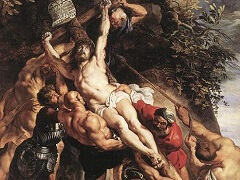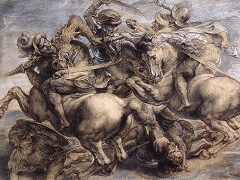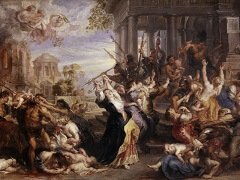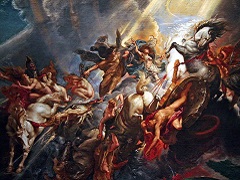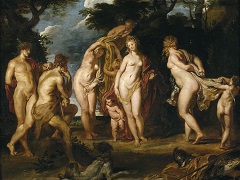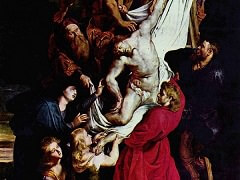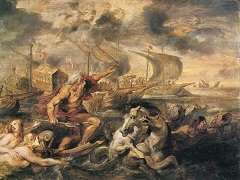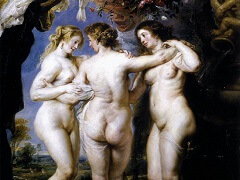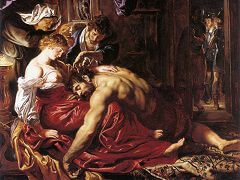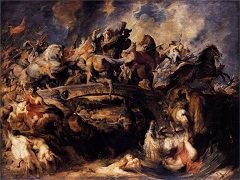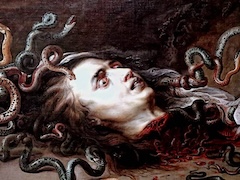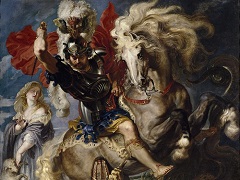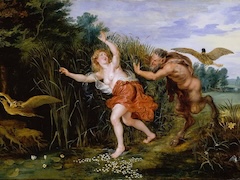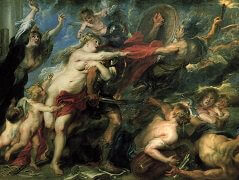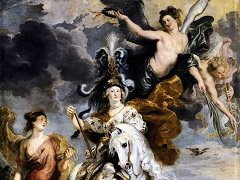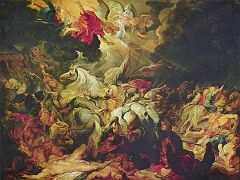Lion Hunt, 1621 by Peter Paul Rubens
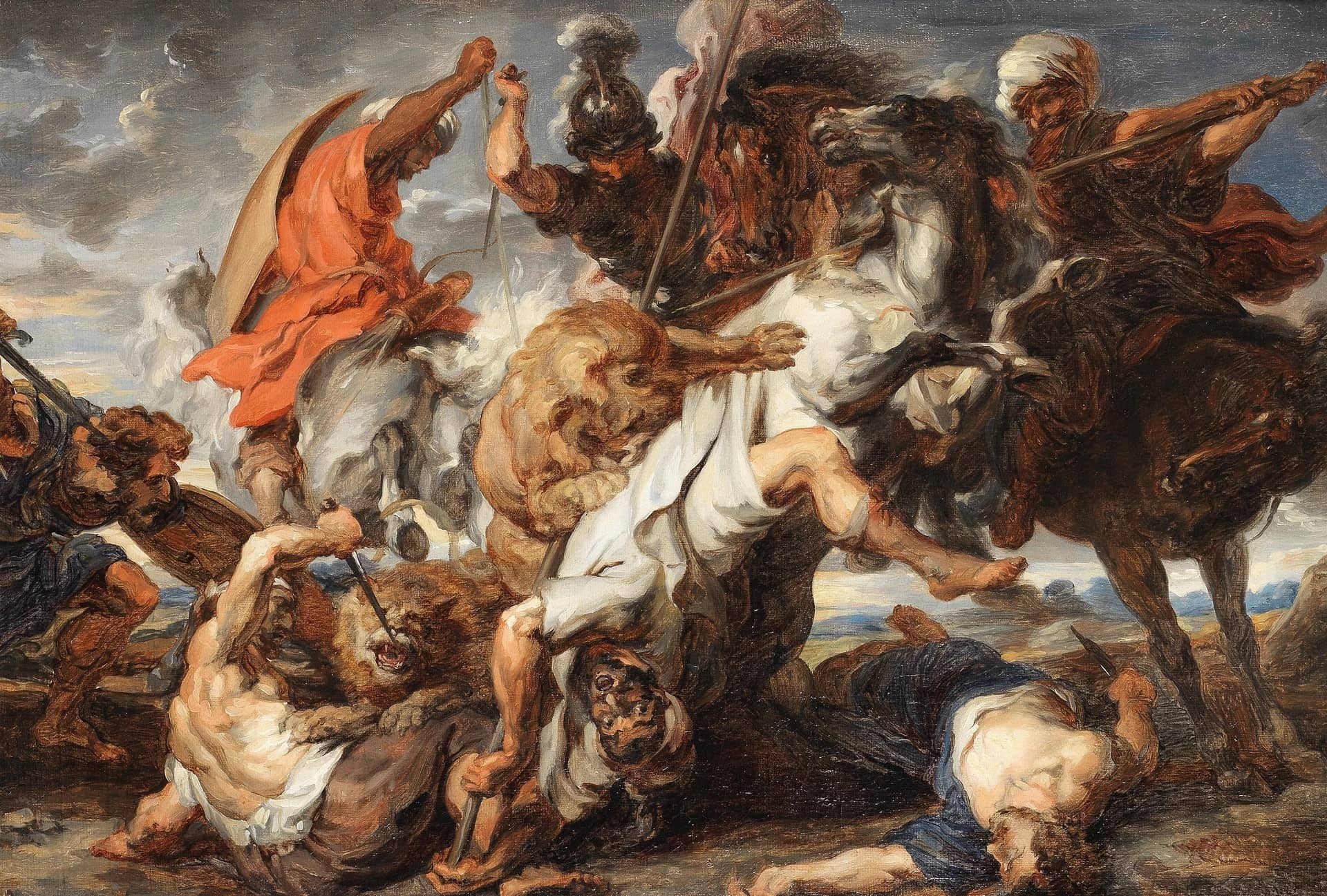
Among many differences from the Schleissheim series, in accordance with Rubens changing attitudes to both life and composition, the combat is equal, or even in the lions' favor in Lion Hunt. The action is spread out and not bounded by the frame, but the front plane is maintained as if by a sheet of glass. The forms are softer, limited by changes of tone rather than by outlines, and linked by a lattice of limbs and weapons.
The painting shows to the full the impetuosity of Rubens' talent. The whirlwind composition is typically Baroque, while the horse charging headlong into the fight was an image perfectly suited to this artist's passionate temperament.
Peter Paul Rubens was very particular about the prints made after his paintings, though he embraced the increased fame that they afforded him. Rubens proudly discussed this painting in a 1621 letter: "I have almost finished a large picture, entirely by my hand, and in my opinion one of my best, representing a Lion Hunt, with the figures life-sized."

